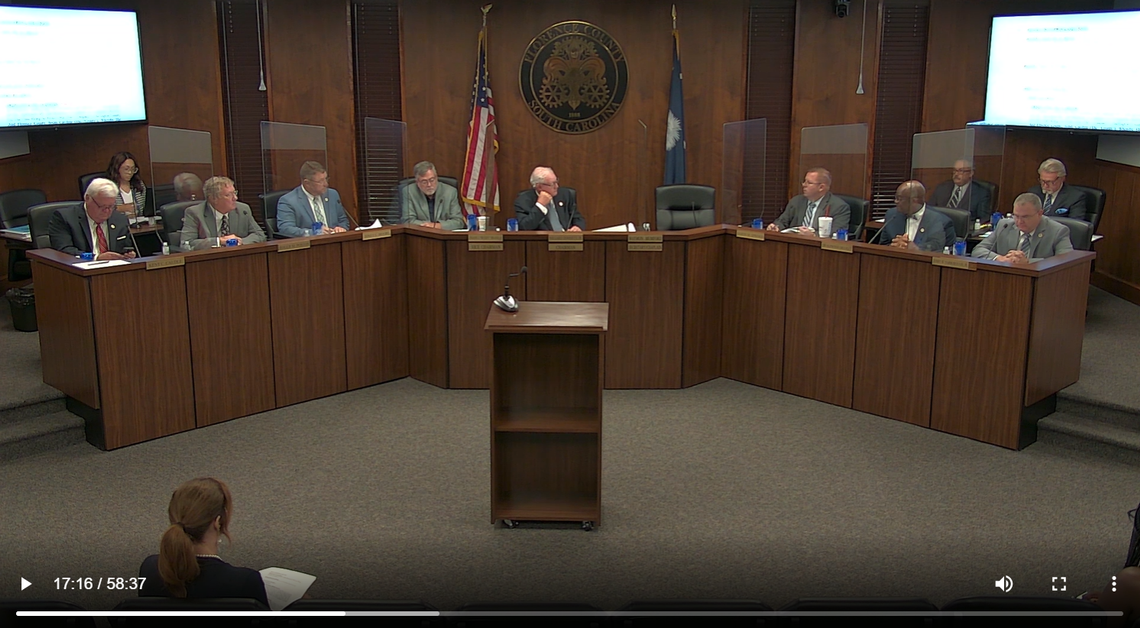As Confederate statues come down, here’s why SC county voted to put one at a museum

As Confederate statues come down across the nation, a controversial one is bound for a South Carolina museum.
The statue honors the late William Wallace Harllee, who created a railroad depot in what is now the city of Florence. He also served as the state’s lieutenant governor when it seceded from the Union in 1860 and helped to form a Confederate brigade, according to the Morning News.
Now, more than a century later, Florence County has approved displaying a sculpture of the contentious leader. The county council voted 5-4 to put a statue of Harllee and his daughter on the grounds of a museum roughly 65 miles northwest of Myrtle Beach, according to video from the July 21 meeting.
The statue is set to go to the Florence County Museum, which didn’t immediately respond to McClatchy News’ request for comment on July 26.
A contentious statue
Jason Springs was one of the council members who voted against the Harllee statue resolution.
“There are some concerns with members of our community about his Confederate past and his history dealing with the secession of South Carolina,” Springs said, according to WBTW. “From my standpoint, I’m working towards bringing everyone together. The last thing I want to do is put something out there that will further divide us.”
Also opposed was the chairperson of the Florence County Democratic Party Isaac Wilson, who told the Morning News he didn’t think it was a partisan issue.
“It’s a morality issue and where we are right now as a country, this kind of display doesn’t serve us well anymore,” Wilson said, according to the newspaper. … “Why do we constantly want to live in the past, separated by hate, prejudice and statues that remind us of unpleasant times?”
But a draft of the county’s agenda for the July 21 meeting outlines historical reasons for exhibiting the statue.
Among them, officials said Harllee “was the founder, owner and president of the Wilmington and Manchester Railroad and located a depot on the rail line which later became Florence.” He also had a daughter named Florence and reportedly told her “this place will be called in your name.”
One of Harllee’s descendants brought up the idea of the statue in 2014, and it was finished in 2018. That same year, the museum’s board unanimously voted against bringing the bronze sculpture to its property, news outlets reported.
After the latest vote about the statue, county council member Kent Caudle asked whether it was required to stand on museum grounds. Caudle, who had earlier voted in favor of the resolution, said an “alternative location on property owned by the county” should be considered, according to the Morning News and video of the July 21 meeting.
But with the motion about the museum already approved, the county council moved on to other topics, footage shows.
Other symbols come down
While the Harllee statue has found a home, others with ties to the Confederacy have come down in recent years.
Last year, one monument honoring a white supremacist was ordered to be demolished in North Carolina. Others have gone into storage or been slated to move onto private property.
There was a push to remove controversial symbols after a 2015 mass shooting at a predominately Black church in Charleston. The accused gunman was seen with a Confederate battle flag, renewing debate across the nation, McClatchy News reported.
Calls to remove statues resurfaced after the 2017 unrest in Charlottesville, Virginia. Then in 2020, the death of George Floyd sparked nationwide protests as well as conversations about race and criminal justice reform.
As communities considered the fates of their Confederate statues, some people said they represented white supremacy. Others have contended the sculptures help to recognize Southern and Civil War-era history.
Many of the monuments went up decades after the war. Most were erected “between the 1890s and 1950s, which matches up exactly with the era of Jim Crow segregation,” Mark Elliott, a history professor at the University of North Carolina at Greensboro, told History.com in an article first published in 2017.
Since 2000, a South Carolina law called the Heritage Act has required “local governments seeking to change historic names and monuments” to get approval from the state legislature, The State reported.
Fort Bragg in North Carolina could change its controversial name. What to know
